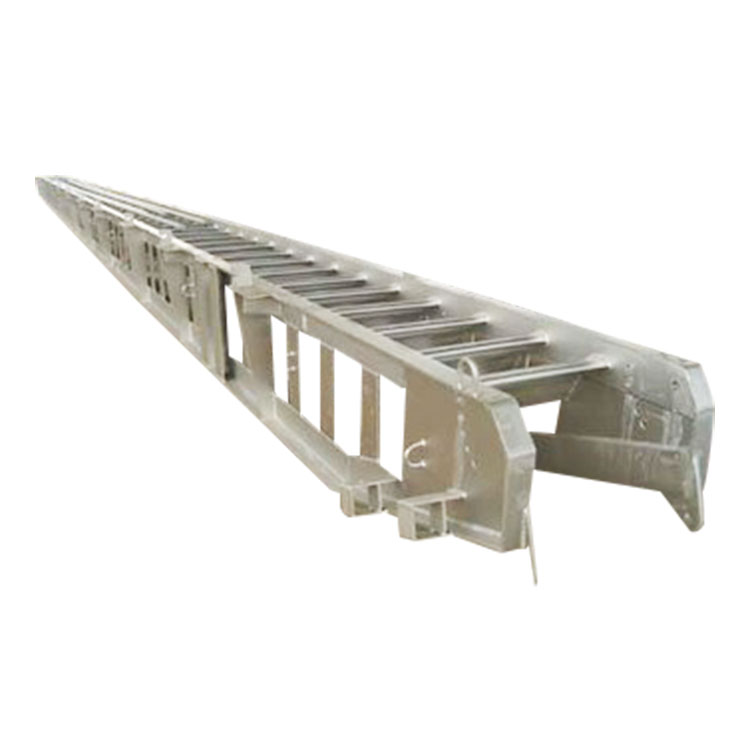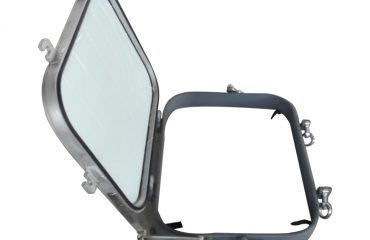Marine ladders are indispensable components of boats, ships, offshore platforms, and coastal structures, serving as vital access points that prioritize safety, durability, and functionality in harsh aquatic conditions. Unlike standard ladders, these specialized tools are engineered to withstand saltwater corrosion, extreme weather, and heavy use while providing secure footing for crew members, passengers, or workers. This comprehensive guide explores the key types, material innovations, safety features, installation guidelines, and diverse applications of marine ladders, offering valuable insights for maritime enthusiasts, vessel operators, and industry professionals.

A defining characteristic of marine ladders is their adaptability to marine environments. The primary challenge in designing these ladders is combating saltwater corrosion, which can degrade standard materials rapidly. As a result, manufacturers rely on corrosion-resistant materials such as stainless steel (316 grade is common for its high resistance to saltwater), aluminum, or fiberglass-reinforced plastic (FRP). Stainless steel balances strength and durability, making it ideal for heavy-duty applications like ship decks or offshore platforms. Aluminum offers a lightweight alternative, suitable for smaller vessels or temporary access points, while FRP provides excellent corrosion resistance and electrical insulation—critical for environments with electrical equipment.
Marine ladders come in various types, each tailored to specific use cases. Boarding ladders are designed for safe entry and exit from boats, often featuring folding or telescoping designs for easy storage when not in use. They typically include wide, non-slip steps (often grooved or textured) to prevent slips even when wet. Cargo hold ladders are built for accessing storage areas below deck, with sturdy rungs and handrails to support workers carrying equipment. Pilot ladders are specialized for transferring pilots between ships and shore or between vessels, adhering to strict international safety standards with uniform rung spacing and non-slip surfaces. Jacobs ladders—flexible rope ladders with wooden or plastic rungs—are emergency access tools, stored compactly and deployed quickly in case of evacuation.
Safety is paramount in marine ladder design, with several features integrated to minimize risks. Non-slip steps are a universal requirement, as wet or icy surfaces are common in maritime settings. Handrails (either fixed or foldable) provide stability, while some ladders include guardrails or safety cages for high-altitude access. Rung spacing is standardized (typically 12 to 14 inches) to ensure comfortable, secure climbing. For ladders installed on moving vessels, shock-absorbing mechanisms may be included to mitigate the impact of wave motion. Additionally, many marine ladders are designed to be self-draining, preventing water accumulation on steps that could lead to slips.

Proper installation and maintenance are essential to ensure marine ladders remain safe and functional. Installation should comply with maritime regulations (such as those set by the International Maritime Organization, IMO) and vessel-specific requirements. Ladders must be securely fastened to stable structures—deck mounts, hull sides, or platform edges—using corrosion-resistant hardware like stainless steel bolts. Regular inspections are necessary to check for signs of corrosion, loose rungs, or damaged handrails. Cleaning with freshwater after exposure to saltwater helps prevent buildup, while lubricating moving parts (for folding or telescoping ladders) ensures smooth operation.
Marine ladders find applications across diverse maritime settings. On commercial ships, they facilitate crew movement between decks, cargo holds, and engine rooms. Recreational boaters rely on boarding ladders for swimming, fishing, or accessing docks. Offshore oil rigs and wind farms use heavy-duty marine ladders for worker access to platforms and equipment. Coastal facilities like harbors or piers install fixed ladders for maintenance or emergency access to water levels. Even military vessels use specialized marine ladders for rapid deployment and personnel transfer in tactical scenarios.
Durability and longevity are key considerations for marine ladders, as they must withstand not only saltwater but also extreme temperatures, UV radiation, and physical impact. Manufacturers often subject ladders to rigorous testing—including load-bearing tests, corrosion resistance trials, and fatigue tests—to ensure they meet industry standards. For harsh environments, ladders may undergo additional treatments like galvanization or powder coating to enhance corrosion resistance.





